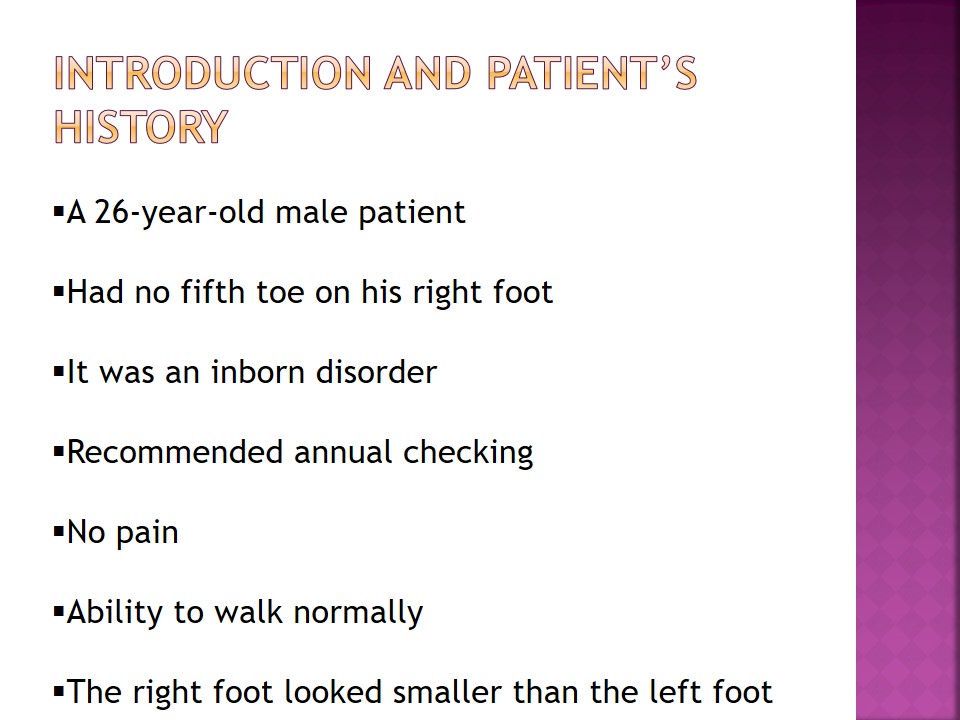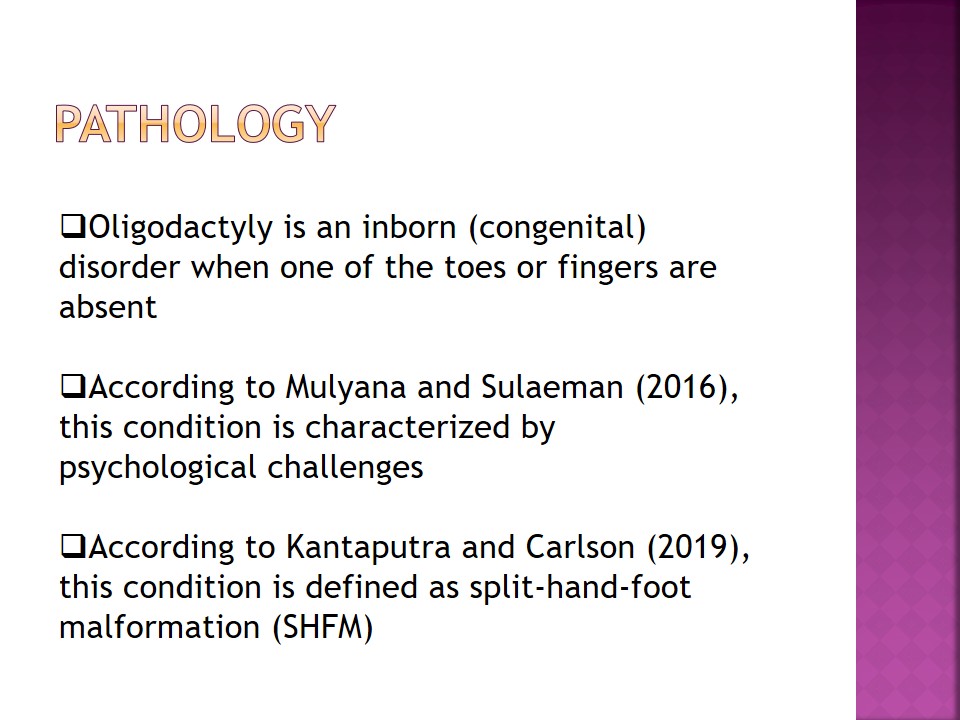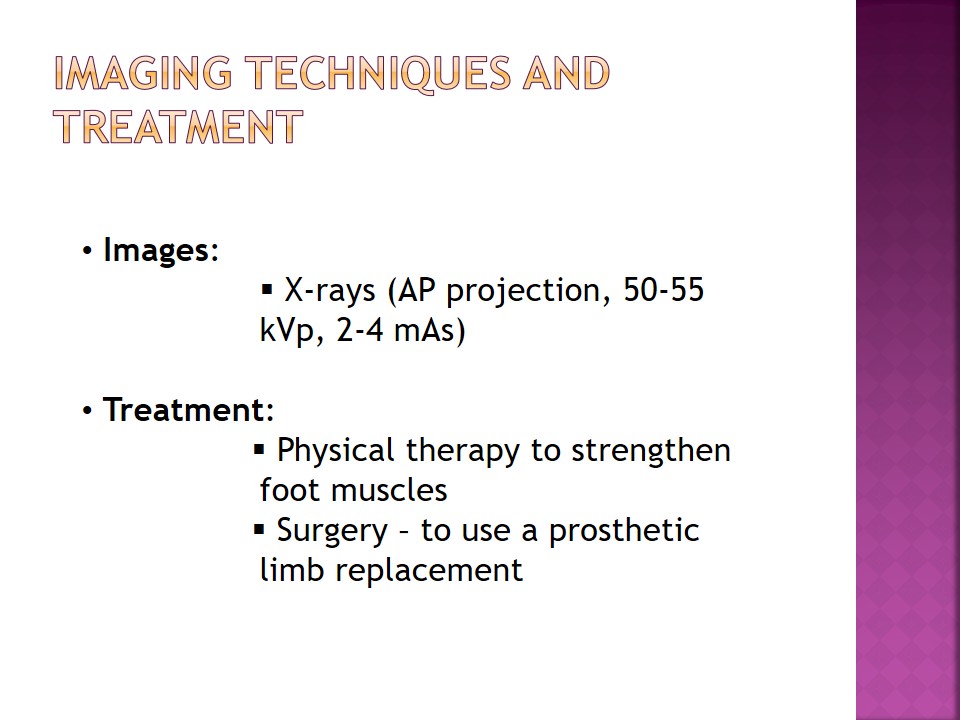Introduction and patient’s History
- A 26-year-old male patient;
- Had no fifth toe on his right foot;
- It was an inborn disorder;
- Recommended annual checking;
- No pain;
- Ability to walk normally;
- The right foot looked smaller than the left foot.
In this case, the patient was a 26-year-old man with an inborn disorder – the absence of the fifth toe on his right foot. Annual checking was recommended for this outpatient. At the moment of evaluation, no pain or walking challenges were reported. The examination proved that the right foot looks smaller compared to a normal foot. However, in general, the patient felt well, and the only recommendation was to continue annual checking and observing changes if any.

Pathology
- Oligodactyly is an inborn (congenital) disorder when one of the toes or fingers are absent.
- According to Mulyana and Sulaeman (2016), this condition is characterized by psychological challenges.
- According to Kantaputra and Carlson (2019), this condition is defined as split-hand-foot malformation (SHFM).
An inborn disorder when a person has fewer than five toes on a foot is known as oligodactyly. This physical malformation is not a frequent condition, still, many people around the globe suffer from it. For example, Mulyana and Sulaeman (2016) admitted that oligodactyly is not just a disease with physical problems but an illness that is characterized by psychological conditions and challenges human relationships and interactions. Kantaputra and Carlson (2019) gave another definition to the absence of a toe or a finger, saying it as split-hand/foot malformation (SHFM) that affected the central rays of hands or feet. In general, the absence of one toe that does not result in walking disabilities is not a serious health problem but a psychological issue.

Imaging Techniques and Treatment
- Images:
- X-rays (AP projection, 50-55 kVp, 2-4 mAs).
- Treatment:
- Physical therapy to strengthen foot muscles;
- Surgery – to use a prosthetic limb replacement.
To control physical changes and prevent complications, X-rays are recommended with such characteristics like AP projection, 50-55 kVp, and 2-4 mAs. In this case, the patient is assessed annually to predict the development of negative psychological changes and control the physical growth of the foot, as well as its functions and abilities of the patient. Regarding the fact that no pain disturbs the patient, physical therapy is recommended to strengthen the muscles of the foot. Another option is a surgery that is offered for patients who are ready for a prosthetic limb replacement. This procedure is not cheap, and not many people may allow it without involving additional funding.

References
Kantaputra, P. N., & Carlson, B. M. (2019). Genetic regulatory pathways of split‐hand/foot malformation. Clinical Genetics, 95(1), 132-139.
Mulyana, D., & Sulaeman. (2016). People with lobster-claw syndrome: A study of oligodactyly sufferers and their communication experiences in the village of Ulutaue, South Sulawesi, Indonesia. Mediterranean Journal of Social Sciences, 7(1), 136-144.